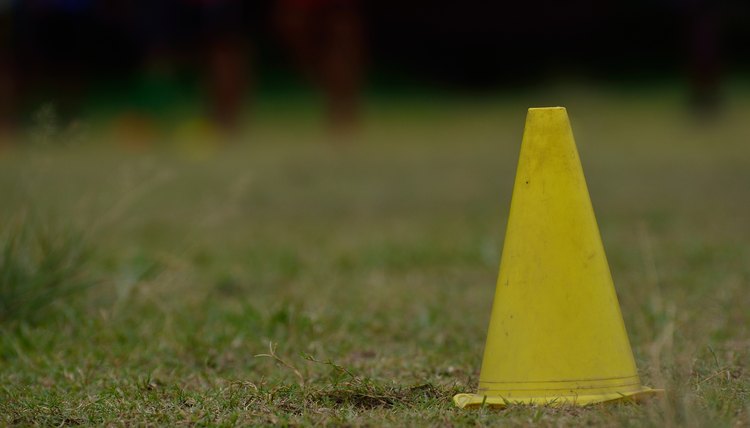Turning Techniques for Shuttle Runs

Shuttle runs test your agility and athleticism as you complete a series of short sprints with 180 degree turns between each sprint. A similar exercise, called a beep test, requires you to complete each sprint before a beep sounds. When you want to improve your time on a shuttle run, focus not only on your acceleration for each sprint, but also on your turning technique.
Plant and Pivot
A simple plant and pivot is the main technique to master. When you approach the line, lower your hips and plant one foot along the line. Pivot your body and other foot and use both legs to propel your body away from the line. Pushing off firmly on your first strides after the pivot helps you accelerate quickly toward the other end line.
Use Hands
Adding your hands to the turn provides additional leverage and stability as you complete the turn. As you plant your right foot, place your right hand near your foot and use your arm to help push you away from the line. Another way to use your hands is to place your right hand on the upper thigh of your right leg and push off, which helps stop your body's forward momentum as you change directions.
Alternate Legs
When a shuttle run is more than about six lengths, consider alternating your planting leg. You use the muscles on the planting and non-planting legs differently. Therefore, alternating the leg you plant lets you share the muscle use between your legs. Rather than strictly alternating, which can throw off your stride, gauge the distance to the goal line and favor the leg you didn't use on the last turn.
Gradual Turn
A gradual turn is often more effective than a pivot turn, despite requiring you to run a slightly longer distance. In a gradual turn, rather than turning at a specific moment, run in a tight semicircle at the end of each sprint, placing the peak of the semicircle at the end line. This technique allows you to keep your forward momentum rather than abruptly decelerating and accelerating in a pivot turn. It is especially useful for people with knee problems, hip problems or torn muscles that the pivot turn could exacerbate.
